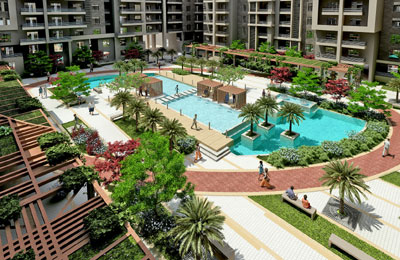
Built assets to contribute over $350bn to UAE economy
DUBAI, November 29, 2016
The investment in buildings and infrastructure is playing a key role in supporting the UAE’s economic diversification agenda, said a report by Arcadis, the leading global design and consultancy for natural and built assets.
The UAE's built assets, including transport links, high quality residential and commercial property, and productive industrial centres, will contribute $351 billion to the country's economy, up 16 per cent over the last two years, stated Arcadis in its ‘2016 Global Built Asset Performance Index’.
The index, developed in conjunction with the Centre for Economics and Business Research (Cebr), examines the revenue that is generated by buildings, infrastructure and other fixed assets (homes, schools, roads, airports, power plants, malls, railways and ports) in 36 countries around the world that collectively represent 78 per cent of global GDP (gross domestic product).
According to experts, the total contribution from built assets account for 50 per cent of the UAE’s total GDP in 2016.
This growth in percentage is partly due to the impact of a lower oil price, which has seen the percentage of revenue that comes from exporting natural resources decrease, but also reflects the tremendous progress that the UAE has made in recent years in diversifying into new industry sectors, they stated.
Derek Sprackett, the head of business advisory at Arcadis Middle East, pointed out that built assets make a significant contribution to a country’s economic performance.
"In recent years, many countries across the Middle East have invested heavily and strategically in real estate and infrastructure, as part of their national visions and efforts to diversify their economies. Our research shows this strategy is already paying financial dividends, as well as creating cities and communities where people want to live, work and visit," he observed.
According to Arcadis, the UAE and Qatar lead the world when it comes to securing a financial return from their built assets when this is assessed on a per-capita basis.
In 2016, built assets will generate an average of $37,861 for every person that lives in the UAE. This figure is higher than any other country apart from Qatar, where the value is $66,316. This figure demonstrates that the UAE has not only invested in its built environment, but it is also securing an impressive return on this capital spend.
The Arcadis research also examined how the economic return from built assets would evolve over the next decade.
For the UAE, the study showed that the revenue contribution that comes from built assets would increase by 33 per cent in this period, reaching a total of $468 billion by 2026.
"Vision 2021 provides a hugely impressive roadmap on how the UAE will develop in the future. Since its inception in 2010, a significant amount of progress has been made across the country however as we move closer to 2021, there’s little room for delay," stated Sprackett.
"To complete the volume of projects being planned, the mechanics that support the delivery process need to become more efficient. This includes the speed at which projects are procured, tenders assessed, and schemes ultimately started. This is particularly important for major programmes like Expo 2020, the expansion of Al Maktoum Airport and Khalifa Port, and the development of new city districts and industrial clusters," he added.-TradeArabia News Service







